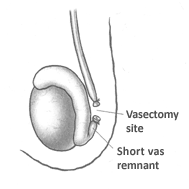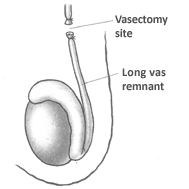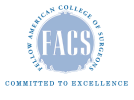Vasectomy Reversal Success Rates
Excellent Vasectomy Reversal Success Rates at MFS
Contrary to popularly held beliefs, the success rates of a vasectomy reversal do not suddenly decline after 10 years. Dr. Bastuba has successfully reversed vasectomies with patients up to 40 years following a vasectomy, with pregnancy occurring as early as a few months post reversal. As with all extremely specialized and technical procedures, the best results for vasectomy reversal are obtained by surgeons with extensive training and a wealth of experience.
It is critical that your vasectomy reversal surgeon be skilled in all facets of reconstruction, especially vasoepididymostomy (VE), since the first attempt at reconstruction is often the best opportunity for success. Skilled microsurgeons agree that vasoepididymostomy is far more challenging to perform than a vasovasostomy1 (UrologyHealth.org. 2020). Dr. Bastuba is particularly proud of his vasoepididymostomy success rates.
We split our vasectomy reversal success rates into the “patency success rate” and “pregnancy success rate”. Patency rate indicates success of sperm returning to the ejaculate. Because pregnancy is a “couples phenomenon” and depends on various factors, especially female fertility issues, the pregnancy rate is always lower than the patency rate. View the success rate of vasectomy reversals including vasovasostomy and vasoepididymostomy success rates:
Table
Type of Vasectomy Reversal Patency Success Rate Pregnancy Success Rate
(dependent on female fertility)Vasovasostomy 99% 65-75% Vasoepididymostomy 99% 40-60% The operating microscope and microsurgical techniques, including using a suture finer than a human hair, have enhanced vasovasostomy success rates to 98 percent if active sperm are found at the vasectomy site (vasovasostomy). If the sperm passage is blocked upstream closer to the testicle where sperm are produced, the more advanced vasoepididymostomy is required to bypass this blockage. Dr. Bastuba currently employs the state-of-the-art vasoepididymostomy technique. This technique is sometimes referred to as the longitudinal intussusception technique and requires two 10-0 or 11-0 sutures. It is by utilizing this technique that Dr. Bastuba has achieved the 90% patency rate in his vasoepididymostomy patients. View these inspiring fertility videos and testimonials.
The success rates of a vasectomy reversal can be affected by the location of the vasectomy site. Dr. Bastuba has seen vasectomies close to the testicle, which are more difficult to reverse and may make a vasoepididymostomy necessary. Disconnected vas deferens farther away from the testicle allow a reversal, with the vasovasostomy technique and have a higher chance of success.
![vasectomy site close to the testicle]()
![good vasectomy site: disconnected vas deferens farther away from the testicle]()
- Less time since vasectomy
- Prior good fertility history (pregnancies within six months of trying) especially with same partner
- Overall good health practices (exercise, healthy eating habits)
- Sperm granuloma (Pressure relief valve for epididymis and keeps epididymal pressure low therefore decreased chance of blow out with need for vasoepididymostomy)
Before the vasectomy reversal, the microsurgeon will examine the scrotum to evaluate the conditions of the vasectomy site.
- A firm or enlarged epididymis may be an indication for an epididymal blockage, which would make the more complicated vasoepididymostomy necessary.
- The length of the vas deferens may be determined during the exam. The longer the vas deferens, the lower the risk of obstruction and the greater the chance for a regular vasovasostomy. However, no findings of epididymal blockage or vas deferens obstruction cannot guarantee that a vasoepididymostomy won’t be necessary. (See Vasectomy Reversal Techniques)
- One or both of the testicles smaller in size may be an indication of testicular failure, which may have negative impact on success.
References
- Vasectomy reversal. UrologyHealth.org. Urology Care Foundation. Retrieved April 2020, from urologyhealth.org/urologic-conditions/vasectomy-reversal
- Roberts MT, Jarvi K, Chan P. 2013. Vasoepididymostomy. In: Schlegel PN, Goldstein M, editors. Surgical and Medical Management of Male Infertility. New York (NY): Cambridge University Press. Chapter 11. cambridge.org/vi/academic/subjects/medicine/obstetrics-and-gynecology-reproductive-medicine/surgical-and-medical-management-male-infertility
- Boorjian S, Lipkin M, Goldstein M. 2004. The impact of obstructive interval and sperm granuloma on outcome of vasectomy reversal. Journal of Urology. 171(1):304-6. auajournals.org/doi/abs/10.1097/01.ju.0000098652.35575.85
- Kirby EW, Hockenberry M, Lipshultz LI. 2017. Vasectomy reversal: decision making and technical innovations. Translational Andrology and Urology. 6(4):753-760. tau.amegroups.com/article/view/15809/16240








